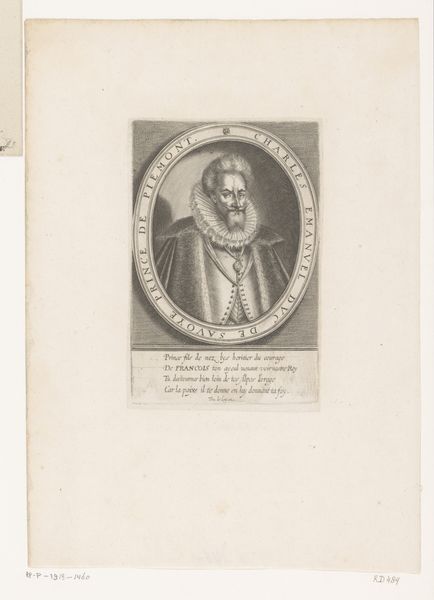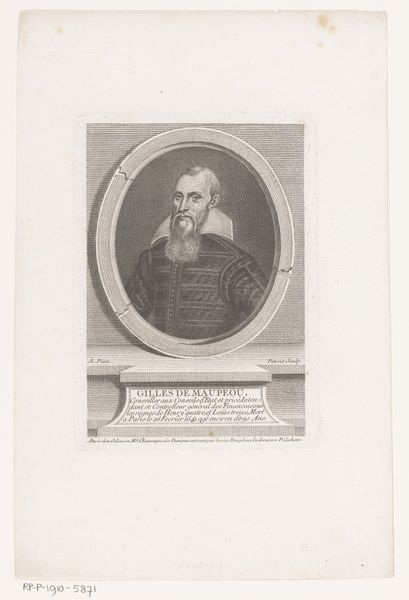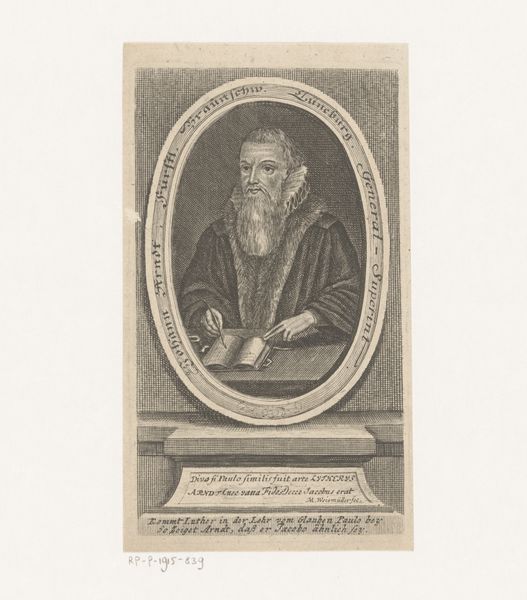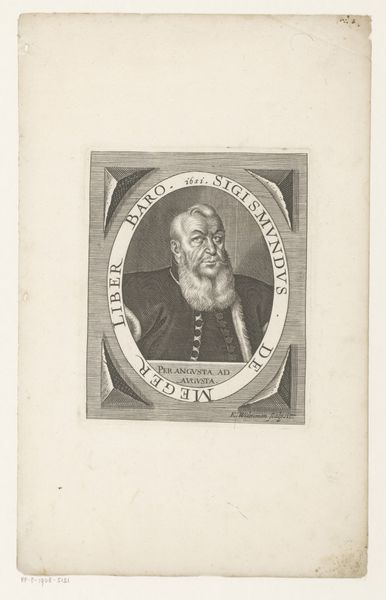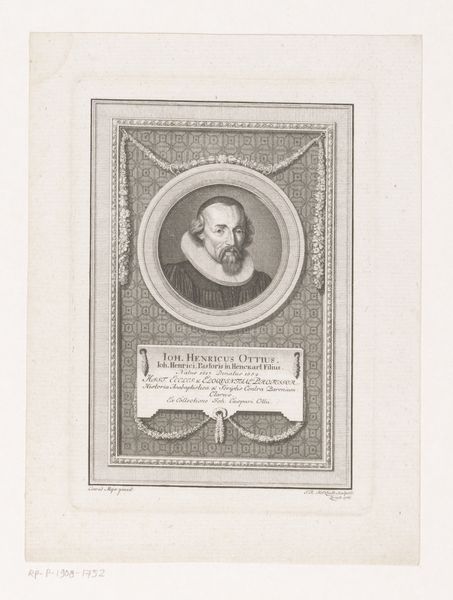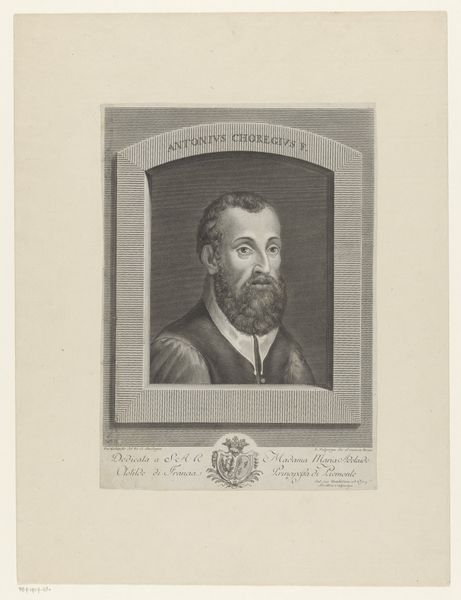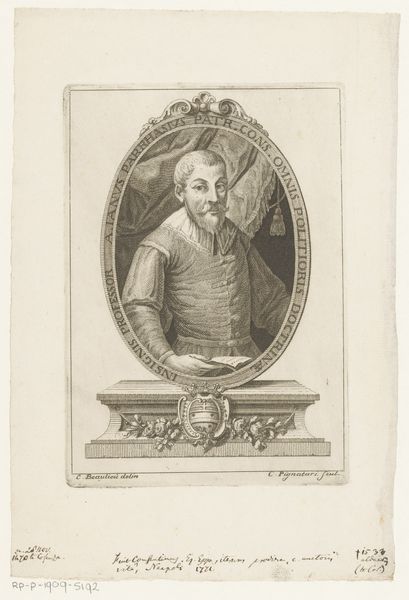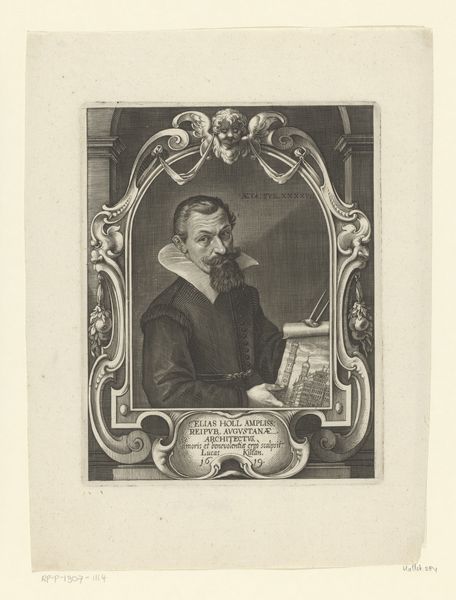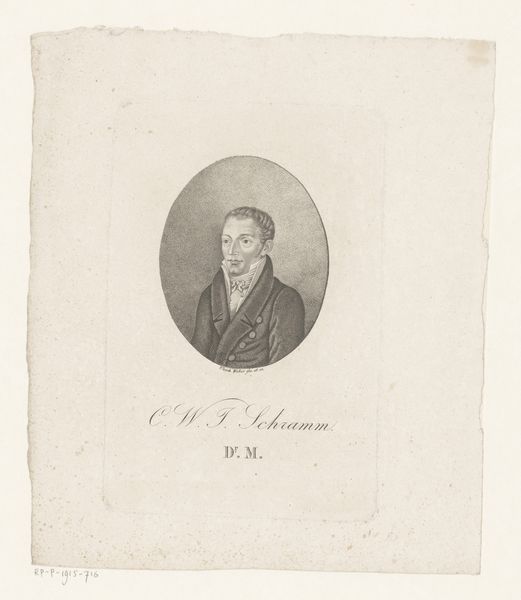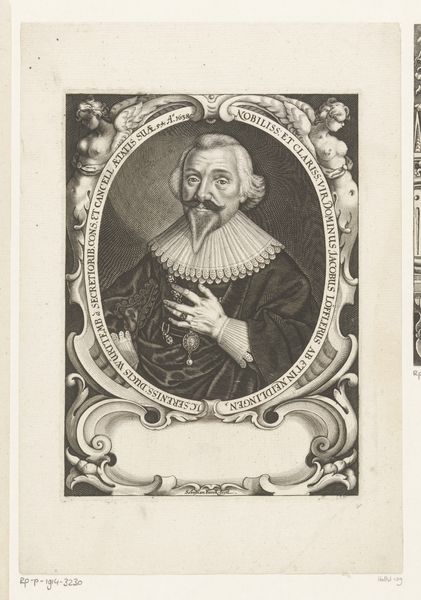
print, engraving
#
portrait
#
baroque
# print
#
old engraving style
#
figuration
#
history-painting
#
engraving
Dimensions: height 170 mm, width 115 mm
Copyright: Rijks Museum: Open Domain
Editor: This is "Portrait of Guillaume Barclay at the Age of 53," made between 1619 and 1624 by Claude Mellan. It's an engraving, so a print. I am struck by how detailed it is, especially all the heraldry. It almost overwhelms the central portrait. What do you make of its composition? Curator: It is indeed a study in contrasts. Observe how the oval portrait is meticulously rendered using precise, curving lines that delineate the face, while the surrounding heraldic shields are presented more abstractly, almost flatly. Notice too how the banner and dedication use negative space. The effect, which echoes Baroque sensibilities, prompts us to consider how representational modes interact. The artist is not merely depicting a likeness but also constructing an elaborate framework of identity, through surface qualities of texture, tonality and symbol. How does the artist create hierarchy? Editor: So, by creating textural contrast, the artist emphasizes Barclay's face by giving it more definition. It's clever. And it seems as though he also gives visual weight to the oval frame around Barclay's face versus the rectangular edge of the whole engraving. Curator: Precisely. Note also the dynamic tension between the linear precision of the face and the looser, almost gestural quality of the heraldic devices. It pushes us to analyze the different visual languages operating within the same piece. The formal interplay suggests the sitter's social standing. It highlights not only his person but the attributes associated with it. It leads me to wonder, is it unified? Editor: I see what you mean. It is not merely decorative; it contributes to the layered meanings in the piece, the surface quality becomes key in deciphering how we must approach portraiture in that period. I see now the push-pull between decoration and description as essential. Thanks for your insights.
Comments
No comments
Be the first to comment and join the conversation on the ultimate creative platform.

